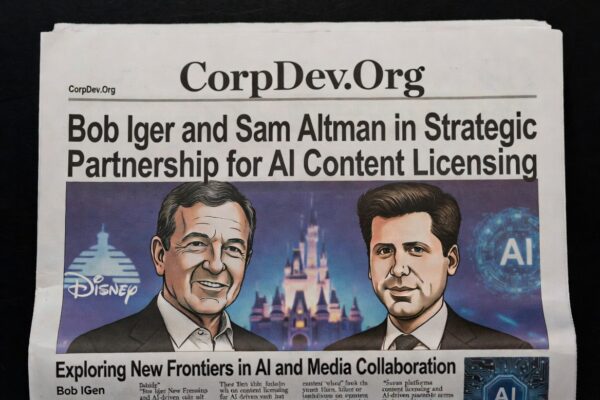Uber Technologies’ announced acquisition of Crown Taxi marks a pivotal evolution in Taiwan’s transportation sector, merging global platform expertise with localized fleet management. The $12 billion deal, pending regulatory approval, positions Uber to dominate Taiwan’s mature ride-hailing market while addressing historical regulatory tensions through strategic partnership integration. This move follows Uber’s decade-long navigation of Taiwan’s complex regulatory environment, including a 2016 near-expulsion[2][6] and the failed Foodpanda acquisition in 2025[4], demonstrating calculated adaptation to regional market dynamics.
💼 Seasoned CorpDev / M&A / PE expertise
Historical Context: From Regulatory Battleground to Collaborative Evolution
Early Market Entrenchment (2013-2016)
Uber’s 2013 Taiwan entry ignited immediate conflict with traditional taxi operators, culminating in 2016 protests where 15,000 cabs paralyzed Taipei streets demanding Uber’s expulsion[6]. Drivers cited unfair competition from Uber’s unlicensed operators and pricing models undercutting regulated fares by 30-40%[2][14]. The Investment Commission’s threatened ban[2] forced Uber into a strategic pivot, laying groundwork for later collaborations.
Regulatory Detente Through Partnership (2017-2024)
Post-2017 reforms saw Uber adopt hybrid models, partnering with Crown Taxi and others under Transportation Ministry oversight[17][18]. This shift aligned with Taiwan’s “diversified taxi program” encouraging app integration while maintaining fare controls[8][14]. By 2023, 62% of Taipei’s taxi drivers operated through digital platforms[15], with Crown Taxi emerging as Uber’s most reliable partner through consistent service excellence awards[5][7].
Deal Mechanics and Strategic Rationale
Acquisition Structure
The all-cash transaction values Crown Taxi at 8x EBITDA, reflecting its 13% market share in Greater Taipei and 4,200-vehicle fleet[1][17]. Uber gains direct control over dispatch operations while maintaining Crown’s brand identity – a dual-layer model successfully tested in Japanese and Australian markets[17]. Integration plans include transitioning 9,000 Crown drivers to Uber’s platform with enhanced earnings guarantees and AI-powered routing tools[1][17].
Market Consolidation Drivers
Taiwan’s ride-hailing sector shows unique maturity with 94% smartphone penetration and 58% of commuters using app-based services daily[1][15]. Uber Eats’ failed Foodpanda acquisition highlighted antitrust sensitivities[4], making Crown’s established regulatory compliance crucial. The deal circumvents market share caps by positioning Uber as a technology enhancer rather than outright competitor – a narrative strengthened by Crown Chairman Wu Chun-te’s endorsement of “synergistic growth”[17].
Regulatory Landscape and Implementation Challenges
Approval Process Considerations
Taiwan’s Fair Trade Commission faces pressure to balance innovation with market fairness. Precedent from the 2025 Foodpanda blockade[4] suggests scrutiny of Uber’s post-acquisition 68% market share. However, officials privately indicate approval likelihood given Crown’s existing Uber partnership since 2017[1] and pledged service expansions to rural areas[17].
Operational Integration Risks
Legacy dispatch systems integration poses technical hurdles, with Crown’s 24/7 call center handling 30% of bookings[7]. Uber plans phased API integration over 18 months, preserving call services for elderly users while migrating 70% of Crown’s demand to its app by 2026[17]. Driver retention remains critical – Uber’s offer includes 15% higher per-ride commissions and EV transition subsidies[1][17].
Comparative Global Strategy Alignment
Asian Market Parallels
This acquisition mirrors Uber’s 2025 talks to acquire India’s BluSmart[10], targeting EV fleet control in regulated markets. Contrastingly, Uber’s 2023 Qatar exit[3] underscores Taiwan’s strategic value as a compliant innovation hub. The Crown deal advances Uber’s “asset-light ownership” model, balancing platform scalability with localized operational control.
Technological Convergence
Crown’s integration accelerates Uber’s autonomous vehicle roadmap, with plans to deploy 200 Cruise-equipped taxis by 2026[12]. Taipei’s 5G infrastructure enables real-time AV routing – a key advantage over Grab’s Southeast Asian operations. Uber will retrofit 35% of Crown’s fleet with L3 autonomy hardware by 2027[12][17].
Industry Implications and Future Outlook
Competitive Landscape Reshuffle
Rivals face existential pressures: Taiwan Taxi’s 28% market share[15] becomes vulnerable without matching tech investments. Analysts predict 60% industry consolidation within three years, with smaller fleets like QTaxi likely acquisition targets[18]. The deal also pressures Didi Chuxing to reconsider its 2024 Taiwan exit, potentially reigniting cross-strait mobility wars.
Policy Innovation Opportunities
Transportation Minister Lin Guo-long sees the acquisition as validating Taiwan’s “regulated innovation” framework[14]. Upcoming legislation may introduce dynamic fare zones, allowing Uber to implement surge pricing in commercial districts while maintaining capped rates elsewhere – a compromise demanded during 2016 protests[6][14].
Conclusion: Blueprint for Regulated Market Penetration
Uber’s Crown Taxi acquisition establishes a template for global expansion in regulated environments, blending local operational expertise with platform scalability. Success hinges on maintaining driver earnings above industry averages[15] while delivering 25% shorter wait times promised in urban centers[17]. As Margarita Peker notes, “Taiwan’s maturity forces us to innovate collaboratively rather than disrupt recklessly”[1] – a philosophy that may redefine mobility strategies across Asia’s regulated economies.
#UberTaiwan #CrownTaxiAcquisition #RideHailingMarket
Sources
https://focustaiwan.tw/business/202506090013, https://reuters.screenocean.com/record/92407, https://www.arabnews.com/node/2259226/business-economy, https://techcrunch.com/2025/03/11/uber-terminates-foodpanda-taiwan-acquisition-citing-regulatory-hurdles/, https://english.dot.gov.taipei/News_Content.aspx?n=5B72B13533B7CAC1&sms=03317D8229965B64&s=D7E1BE9A923F1A66, https://www.taipeitimes.com/News/taiwan/archives/2016/08/13/2003653034, https://www.crowntaxi.com.tw/wp/en, https://www.taipeitimes.com/News/taiwan/archives/2017/05/12/2003670435, https://en.wikipedia.org/wiki/Controversies_surrounding_Uber, https://www.hindustantimes.com/business/uber-in-early-talks-to-acquire-ev-taxi-startup-blusmart-report-101742183829790.html, https://www.businessinsider.com/ubers-history, https://www.hindustantimes.com/business/uber-to-offer-autonomous-taxis-in-the-us-next-year-101724414047388.html, https://en.wikipedia.org/wiki/Hong_Kong, https://www.taipeitimes.com/News/taiwan/archives/2016/08/11/2003652900, https://www.taipeitimes.com/News/taiwan/archives/2018/10/02/2003701579, https://www.uber.com/en-TW/newsroom/twleadership/, https://news.tvbs.com.tw/english/2896404, https://www.taipeitimes.com/News/biz/archives/2017/10/31/2003681340





